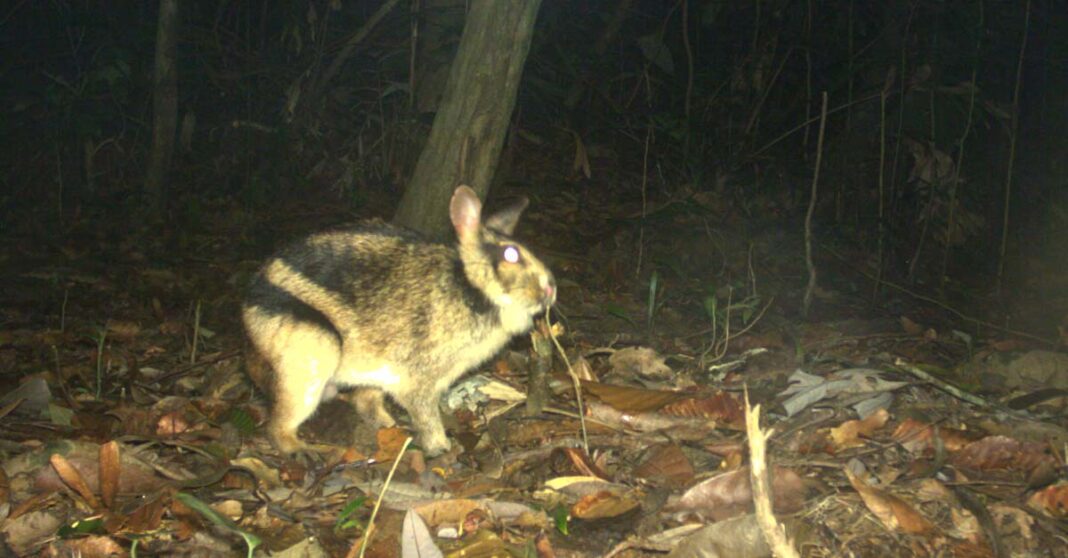The rare Annamite striped rabbit and Annamite dark muntjac have been spotted on camera, according to a new report.
A scientific survey published in the journal Conservation Science and Practice, says the small mammals are unique to the bio diverse Annamite mountains, and scientists believe that new video footage will help make possible the conservation of these animals so that they have a chance at long-term survival.
The animals were first described by scientists in 2000, but the camera “trap” footage captured in this study is the first to show the threatened animals’ locations and distribution. To document species, the research team set up 366 successful camera-trap stations for a total of 43,452 camera-trap nights.

Hunters in the area use wire snare traps that are equally lethal to all animals regardless of their endangered status. Snaring is a major cause of these elusive animals’ scarcity.
“Interestingly,” the researchers write, “the highest occupancies for Annamite striped rabbit were […] where snare removal efforts have been the most intensive and sustained among our six study areas.”
This highlights the importance of education and intervention when it comes to unsustainable hunting practices in the area. Snare removal projects have been taken up by ranger patrol teams, including those in the Saola Nature Reserves in central Vietnam.
Carolyn Cowan writes that this “new camera-trapping study confirmed that these snare-removal efforts are working.”
Striped rabbits were first observed in 1996 at a market in Bak Lak, Laos, by biologist Rob Timmins. The species was described and named after Timmins’ discovery in 2000.



